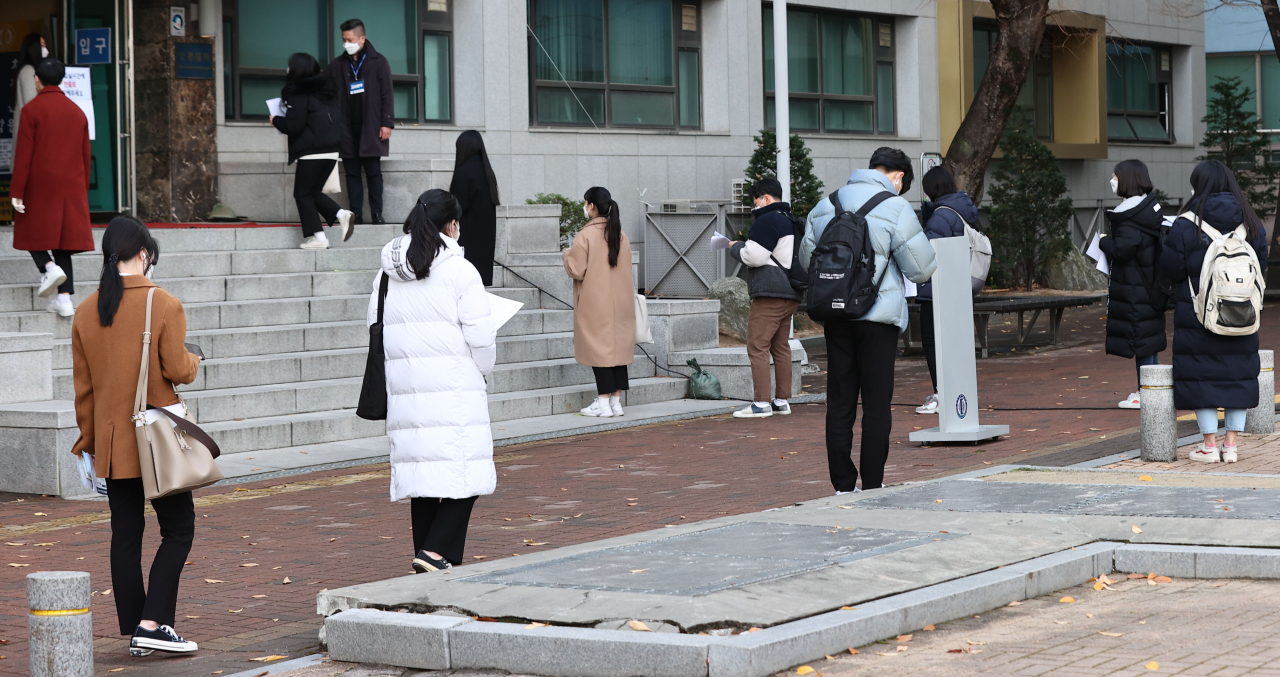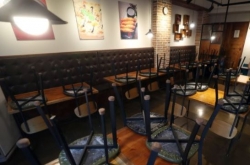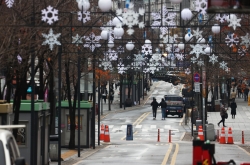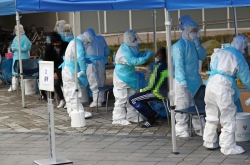Stricter social distancing measures will be restored in the Seoul metropolitan region beginning Tuesday, the South Korean public health authorities said Sunday. The country has now reported 300-plus daily novel coronavirus infection tallies for five consecutive days.
Korea on Saturday performed 9,460 tests and found 330 more positive cases -- 302 locally transmitted and 28 imported -- according to the Korea Disease Control and Prevention Agency updates. The cumulative number of official cases is 30,733.
Prime Minister Chung Sye-kyun said at Sunday’s meeting of the government’s central headquarters for coronavirus response that Seoul and nearby areas will have to follow stricter rules under the five-tier social distancing system in the coming weeks.
“If we fail to bring down the rate of infections now, we might have to face injurious consequences,” he said, warning of something like the “out-of-control situation seen in the US or Europe” possibly taking place here.
“I understand that small businesses are suffering, but the health care systems are being strained beyond their capacities.”
Under the tighter tier, nightclubs, bars, karaoke lounges and other nightlife establishments must limit their operations.
Only takeaway orders are permitted at food outlets past 9 p.m., and dine-in services are banned altogether at cafes.
Gyms and other indoor sport facilities must close at 9 p.m. as well, with only one person allowed for every 4 square meters of space.
Public corporations will return to remote working, and private enterprises are encouraged to allow telecommuting.
Requiring people to wear face masks, keeping logs of visitors and routinely disinfecting surfaces are mandatory for all businesses.
The adjustments come over a month since social distancing restrictions were lift nationwide on Oct. 12 after the Chuseok holiday. The slow climb that began in mid-October has accelerated in the past week, with the number of new locally transmitted cases averaging 255.6 a day.
About a dozen cities and five counties across the country -- Seoul and surrounding Gyeonggi Province included -- had already reverted to either the second- or third-least-restrictive social distancing tiers as of 5 p.m. Saturday, following flare-ups.
Seoul now has more coronavirus cases than any other region in the country. The capital city has reported 7,513 cases to date, surpassing initial epicenter Daegu’s 7,213 cases.
A slew of universities in western Seoul announced they would move back to virtual learning after cases were found among students and staffers.
At least 69 test preppers at private tutoring centers in Noryangjin, a southern Seoul district, had tested positive for the coronavirus a day before the yearly teacher certification exam Saturday, and were consequently barred from taking it.
Health officials and experts give stark warnings for the months ahead.
A senior official at the public health agency told reporters over the weekend that Korea was on the verge of a third wave, which “could be even bigger than the previous waves.”
“Things are looking grave. We are seeing what is the beginning of a next big wave of infections,” she said.
Several medical societies, including the Korean Society of Infectious Diseases, the Korean Society of Epidemiology and the Korean Society of Critical Care Medicine, said in a joint statement Friday that the COVID-19 outbreaks are “likely to get worse.”
The epidemiology society’s analysis shows that the reproduction number -- the average number of people each person with the coronavirus can be expected to infect -- in the last two weeks has risen far past the alert threshold at above 1.5. Without additional measures, daily infections could top 1,000 in a few weeks, the society warned.
Other metrics have worsened over the same period as well.
Saturday’s positivity rate was 3.49 percent, marking a significant jump from Nov. 8’s 2.53 percent. The positivity rate is the percentage of people who test positive for the coronavirus out of all those who have been tested.
Coronavirus-related intensive care unit admissions have climbed, to nearly 90 on Sunday from around 50 at the start of this month. Out of all ICU beds in the capital, only four were “immediately available” as of Saturday afternoon, Health Ministry data showed.
Hospitalizations and deaths are projected to rise further as 67.4 patients in their 60s or older, who are at higher risk of being seriously afflicted, are currently being diagnosed per day on average.
Medical societies attributed the recent spike to the new coronavirus rules that came into effect earlier this month. “The social distancing guidance has been revised in a way that makes relaxing restrictions easier but restoring them harder, inevitably magnifying the risks of spread,” it said.
In instituting the softened system on Nov. 7, the prime minister and the Ministry of Health cited the stabilizing local coronavirus trend and damage to the economy as reasons.
Medical societies also urged the government to “act preemptively” to curtail the outbreaks and to involve experts in the coronavirus decision-making process.
To prevent the outbreaks from worsening, “we need to improve our response based on science” and “incorporate expert suggestions,” they said.
By Kim Arin (
arin@heraldcorp.com)











![[Today’s K-pop] Blackpink’s Jennie, Lisa invited to Coachella as solo acts](http://res.heraldm.com/phpwas/restmb_idxmake.php?idx=644&simg=/content/image/2024/11/21/20241121050099_0.jpg)